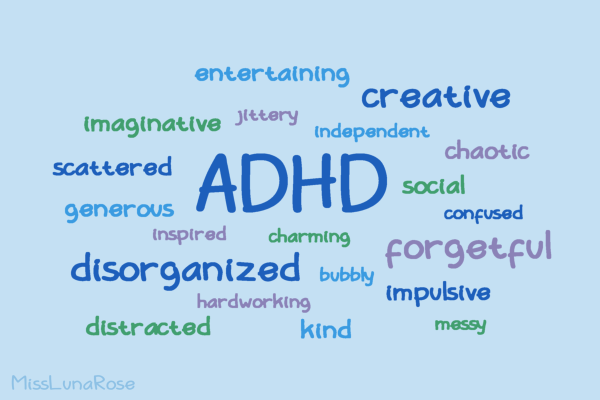You Should Paws & Reflect on Dog-Breeding Practices
A few weeks ago, the American Kennel Club (AKC) announced that America’s most popular dog breed of the year was the French bulldog, dethroning the labrador, which had held the spot for more than 30 years. Though I am more of a fan of the labrador family, having been the owner of a yellow lab and now two labradoodles, that is not the reason why the AKC’s decision makes me upset. I’m upset because the AKC’s announcement will put more dogs at risk and continue the inhumane cycle of unethical breeding practices.
French bulldogs, also known as Frenchies, have been one of the most popular dog breeds of the last decade; they are the Instagram “it” dog, and influencers across all platforms are eager to share pictures of their own desirable dog. Over the past decade, the breed’s popularity has soared by more than 1,000%. This specific breed is well-known for its adaptability to a city lifestyle: they don’t have much energy to expend so they don’t need a lawn, and they’re small and stout enough to be easily transported on a subway. Of course their flat faces, expressive eyes and roll upon roll of fluffy skin are adorable, too. However, these desirable traits are precisely what are wrong with the breed.
As Tove Danovich writes in Vox, “Frenchies have been marketed as the dog best suited to the lifestyles of the rich and quite possibly lazy. They don’t even need much exercise, for the simple reason that their numerous health problems can make too much exercise dangerous.” French bulldogs are prone to skin, eye, spinal and respiratory conditions all because of the physical traits that humans so desire. “Some of these health issues can be lessened by careful breeding (versus buying from a high-volume breeder, more commonly known as a puppy mill), but many are a direct result of the appearance people want their Frenchies to have.”
In announcing that the French bulldog was the most popular dog of the year, the AKC neglected to include any of the human-caused downsides of the breed, and their announcement will no doubt cause another surge of people to pursue this dog. Other similar publicity, like when a French bulldog won the National Dog Show in 2022, will have a similar effect. The AKC’s decision to promote the French bulldog as the most popular breed without mentioning their human-inflicted health problems will only continue the cycle of hyper demand and poorly-managed, aesthetic-based breeding.
As the breed’s popularity has skyrocketed, among everyone from celebrities to your favorite influencer family, so have breeders whose only desire is a quick turnaround of profit, rather than focusing on producing healthy dogs. Of course, there are quality breeders out there whose sole concern is acting with the best interest of their dogs in mind. However, “the average price of a quality Frenchie from a reputable breeder is around $5,300.” While everyone who wants a French bulldog might want to source one from a credible breeder, that is just not the financial reality for every consumer. So puppy mills and other large-scale breeders will be working to meet this demand with less regard for the quality and health of the animal they’re producing.
Humans have been playing God when it comes to dog-breeding for a long time. Centuries ago, dogs were bred for specific purposes, using selective breeding to produce dogs with traits that would make them better at whatever their purpose was: strength, herding, intelligence, etc. Researchers can trace aesthetic-based breeding techniques back to the mid-1800s with the first dog shows, but with the advent of the labradoodle in the 1980s, you can see more modern examples of phenotypic breeding.
Labradoodles were bred to be hypoallergenic animals, not for aesthetic purposes, but Madeline Bernstein, author of “Designer Dogs: An Exposé,” says that once “people realized that if you could breed dogs to be hypoallergenic, you could also breed for big eyes or long ears, or a spotted Frenchie, or a dog so small it could be photographed sitting comfortably inside a teacup.”
Unlike breeding a dog to be better at herding sheep or to be hypoallergenic, breeding a dog so they can have a shorter snout serves no practical purpose other than to make them look cute, and all it leaves for them is a lifetime of breathing issues. There is no singular trait that causes these health problems, but there is no doubt that they are the result of generations of breeding for aesthetic purposes. I’m not going to pretend to know the intricacies of dog breeding or how specific genes show up where, but if we have the power to make dogs’ snouts shorter for aesthetic reasons, then don’t we also have the power to make them longer so they can breathe? Isn’t there some way for us to reverse the damage we have caused to this line of dogs?
While some can look at bulldogs, both French and English, and pugs and see them as a feat of humans’ scientific capabilities, we also have to see their health problems and know that we did that to them, too. We as a society have become so obsessed with attaining each new craze that we ignore the ethical implications of our decisions, and this is even more concerning when such decisions impact a living, struggling-to-breath being. French bulldogs are adorable, but we cannot keep promoting them without a care or acknowledgement of the careless ways they were brought into this world.
Nicole Braun, FCRH ’24, is an English major from Saddle River, N.J.

Nicole Braun is a senior from Saddle River, N.J. and she is thrilled to be a member of Volume 105! Her love for writing and editing led her to begin writing...










































































































































































































